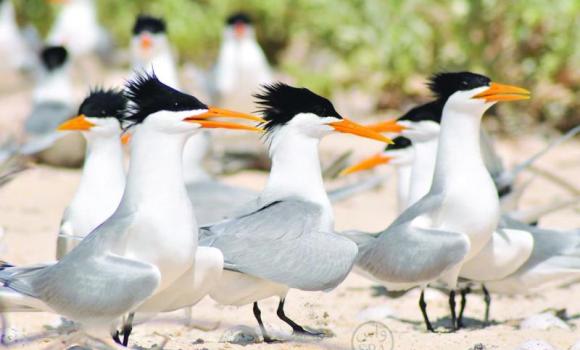| Ganges river dolphin |
Famed Indian naturalist Dr. Anwaruddin Choudhury has recently stated that human activities such as uncontrolled sand mining and fishing in Brahmaputra and Kulsi Rivers have been obliquely affecting the survival of Ganges river dolphins. He also stressed that the government of Assam and environmental groups should come up with an efficient plan to protect the endangered marine mammal in the Indian subcontinent. Dr. Choudhury, who has been studying Indian mammals for thirty years, indicated that fishing by using some nets have been affecting the dolphins' movement in the Kulsi River which is known for having some of densest populations of dolphins in the world. He further added that the dolphins were reported to have died after being entangled in fishing nets in Brahmaputra and Kulsi Rivers. One particular type of fishing nets that are responsible for dolphin deaths are those made of monofilament fibers, which do not reflect the animals' bio-sonar signals. This means that dolphins are unable to detect the monofilament nets and risk getting entangled in them. Furthermore, Dr. Choudhury pointed out that sand mining is polluting the dolphins' habitat in the Kulsi River, and urged that it should be controlled through the conservation perspective. He indicated that Kulsi River, which flows through un-forested villages in Assam's Kamrup district, could be proclaimed as a community reserve for the conservation of the dolphins. He also forbade ongoing movement of tourist boats in dolphin habitat, stating that the boats' movement would disturb the dolphins. He recommended that tourists can see the dolphins from the RCC bridge and the State Tourism Department could introduce conducted tours to the river by giving wide attention about the dolphins.
The Ganges river dolphin is renowned across India as its national aquatic animal. However, it is severely threatened by overfishing, poaching, and pollution in its native range. This is why it is very important to adhere to the guidelines provided by Dr. Choudhury to ensure the survival of this magnificent species of dolphins. Some of the biggest threats this dolphin is facing includes the use of monofilament nets which the species is unable to detect and as a result, ends up becoming entangled and dies. This type of net is also used by poachers and selected fishermen who ruthlessly slaughter the dolphins for their oil. Furthermore, sand mining in Assam has also been putting the dolphins' lives in jeopardy. These magnificent freshwater-dwelling marine mammals require a great deal of protection through well-concerted efforts, which includes efficient anti-poaching measurements and promoting responsible tourism.
View article here

